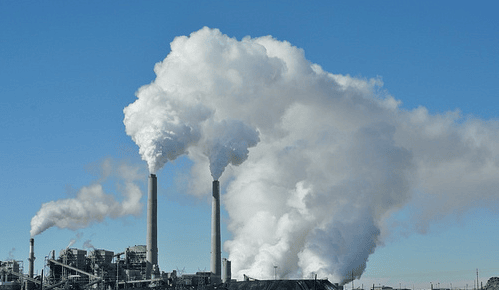
The IPCC Synthesis Report (IPCC AR5 SYR) is based on the reports of the previous three Working Groups and is designed to provide an integrated view of climate change.
The report is organised into four sections:
- Observed changes and their causes
- Future climate changes, risks and impacts – Transformation and changes in systems
- Adaptation and mitigation measures
Looking at the IPCC AR5 report in its entirety, it confirms and underlines what many scientists have been saying for some time: there is now extreme certainty – more than ever before in the history of climate science – that climate change is happening and that humans have caused the majority of it. In fact, the new Synthesis Report published in Copenhagen on 2 November makes it clear that all warming since 1951 is due to human activity. As global carbon emissions have reached record levels and keep rising, the AR5 report also confirms that climate change is already impacting all continents and the oceans, resulting in changes that are often unprecedented and could partly be – or soon become – irreversible.
With current warming of .85 degrees C compared to 1880 levels significant impacts of climate change are affecting communities worldwide. The atmosphere and oceans have warmed, sea levels have risen, and the amounts of snow and ice have diminished. If the world stays on its current path, the picture only becomes more grim. The AR5 report shows that the scientific understanding of future risks has been strengthened in recent years, and that escalating temperatures are expected to slow economic growth, erode food security and exacerbate social and economic inequalities.
According to the IPCC, using scenarios which roughly equate to continuing business-as- usual, global temperature rise will reach a range of 4 degrees C above pre-industrial times, which would be catastrophic for people and planet. The governments of the world have previously agreed on the need to limit global temperature rise to less than 2 degrees C above pre-industrial times, with many of the most vulnerable nations on Earth calling for a cap at 1.5 degrees C. The AR5 report doesn’t rule out the possibility to achieve this, but paints a picture of massive changes in how we power our economies in order to get there.
To this end, the IPCC has – for the first time – outlined a carbon budget. This budget states that for a two-thirds chance of keeping warming below the 2 degrees C threshold, the world will need to cap total emissions, since 1870, at 2900 gigatons. However, as of 2011, two- thirds of this budget had already been spent. Therefore, in order to keep global temperature rise below 2 degrees C by the year 2100, significant emissions reductions efforts will be required over the coming two decades (and accordingly, even more significant and even faster measures to stay below 1.5 degrees C).
Efforts of this magnitude are possible, but will require large scale changes in our current energy system – given that two-thirds of man-made emissions result from burning fossil fuels. The IPCC is quite clear that we will stand no chance of preventing catastrophic warming if we do not leave the majority of the world’s fossil fuel reserves where they are now: in the ground. Furthermore, the report shows that if we want to keep the emissions at a safer, stable low level we have to completely phase-out unabated oil, coal and gas use, with global (net) CO2 emissions peaking and then declining toward zero in the long term.
To replace fossil fuels, the IPCC says we will need to triple our use of zero and low carbon energy by 2025. With renewable energy having improved dramatically in performance and cost-efficiency in recent years, the AR5 report paints existing technologies such as wind and solar as increasingly attractive options, with even stronger future prospects. This is particularly the case if governments put in place stronger enabling policies, for example encouraging a switch in investments from dirty to clean energy, the elimination of perverse subsidies, and incentives to use less energy overall in buildings, transport and industry, which in turn can save money.
In fact, the IPCC lays out a stark choice for us: we can go down the clean energy path on which economic growth is strong, or we can take the carbon pollution path on which economic growth is derailed by climate change. In business-as-usual scenarios, consumption grows by 1.6 to 3 percent per year, not including the need to pay for the cost of worsening impacts. Ambitious mitigation would reduce this growth by only around 0.06 percentage points a year, i.e. 2.94 percent growth instead of 3 percent growth. The IPCC’s economic assessments of the cost of mitigation don’t even include the co-benefits of taking action – such as better public health and increased energy efficiency – or the cost savings which result from avoiding future impacts. Looking at the low costs, the co-benefits and the savings, it’s clear that climate mitigation is an economic no-brainer.
No surprise then that the IPCC also warns that delaying mitigation action now is a bad idea and implies higher costs of action later. But even if we don’t wait, the costs of action can still differ significantly, depending on which energy options we choose. In the context of zero and low carbon energy sources, for example, the report also references nuclear energy and carbon capture and storage (CCS), in addition to renewables. It points out, however, that nuclear is expensive and holds many risks, and that CCS is more theory than practice and has not been proven at scale – major road blocks not faced by the booming and mature renewables industry.
The controversial topics of geo-engineering and carbon removal are also discussed in the report, but with multiple caveats – including that they carry with them severe risks, come at a very high cost, and have not been proven at scale. The IPCC’s approach to such technologies reflects the fact that they are widely seen as a distraction when cheaper, safer and cleaner solutions such as renewable energies are available but haven’t been fully tapped yet. One particular technology receiving some attention in the report is Bioenergy with Carbon Capture and Storage (BECCS). BECCS is an essential part of some low- emission scenarios in the AR5 report, but it comes with drawbacks including high costs and the need to use arable land and water resources to produce bio-fuels.


